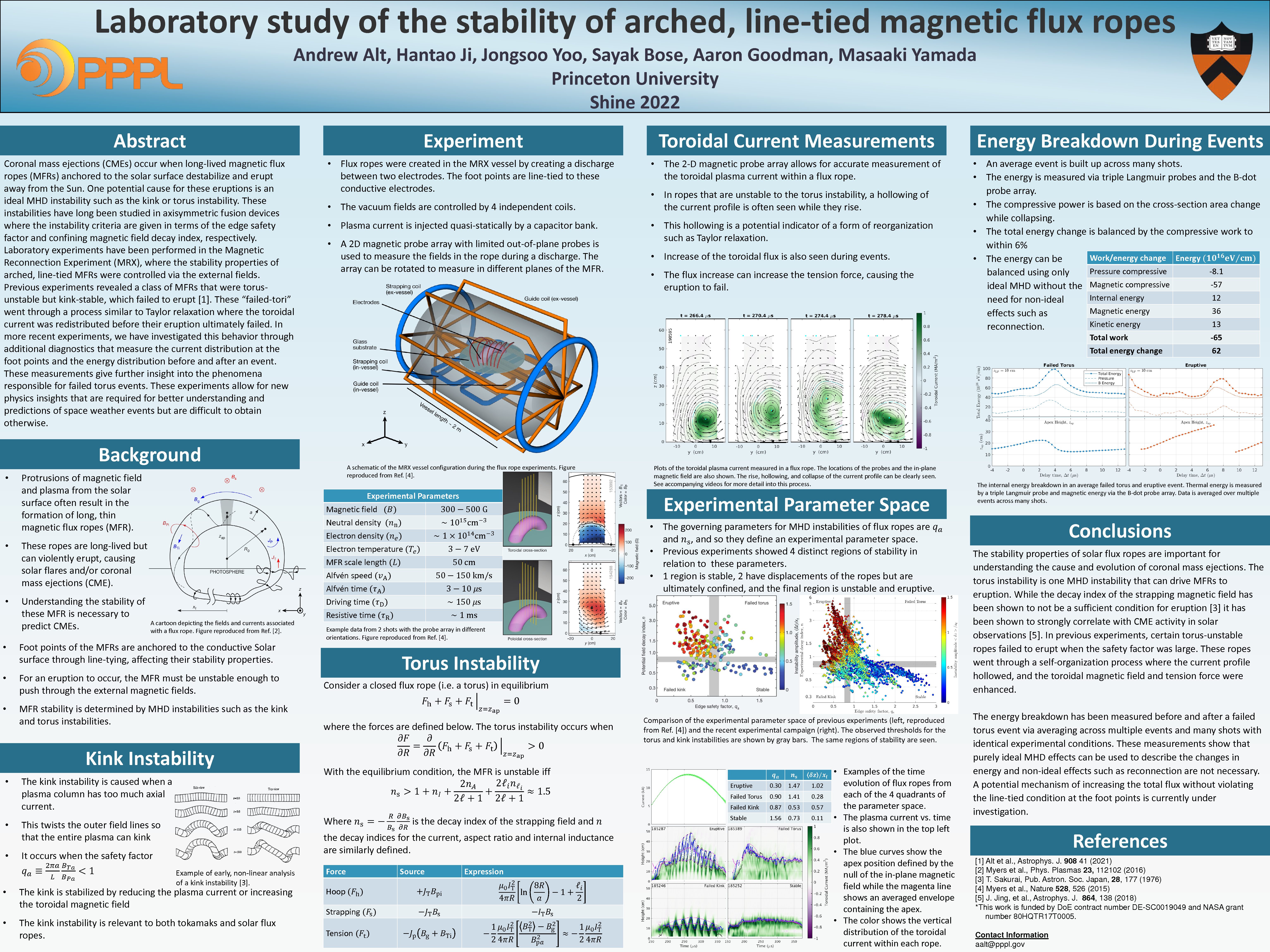Authors: Andrew Alt (Princeton University), Hantao Ji (Princeton University), Jongsoo Yoo (Princeton Plasma Physics Laboratory), Sayak Bose (Princeton Plasma Physics Laboratory), Aaron Goodman (Princeton University), Masaaki Yamada (Princeton Plasma Physics Laboratory)
Coronal mass ejections (CMEs) occur when long-lived magnetic flux ropes (MFRs) anchored to the solar surface destabilize and erupt away from the Sun. One potential cause for these eruptions is an ideal MHD instability such as the kink or torus instability. These instabilities have long been studied in axisymmetric fusion devices where the instability criteria are given in terms of the edge safety factor and confining magnetic field decay index, respectively. Laboratory experiments have been performed in the Magnetic Reconnection Experiment (MRX), where the stability properties of arched, line-tied MFRs were controlled via the external fields. Previous experiments revealed a class of MFRs that were torus-unstable but kink-stable, which failed to erupt [Alt et al. (2021) ApJ 908 41]. These “failed-tori ” went through a process similar to Taylor relaxation where the toroidal current was redistributed before their eruption ultimately failed. In more recent experiments, we have investigated this behavior through additional diagnostics that measure the current distribution at the foot points and the energy distribution before and after an event. These measurements give further insight into the phenomena responsible for failed torus events. These experiments allow for new physics insights that are required for better understanding and predictions of space weather events but are difficult to obtain otherwise.
*This work is funded by DoE contract number DE-SC0019049 and NASA grant number 80HQTR17T0005.


